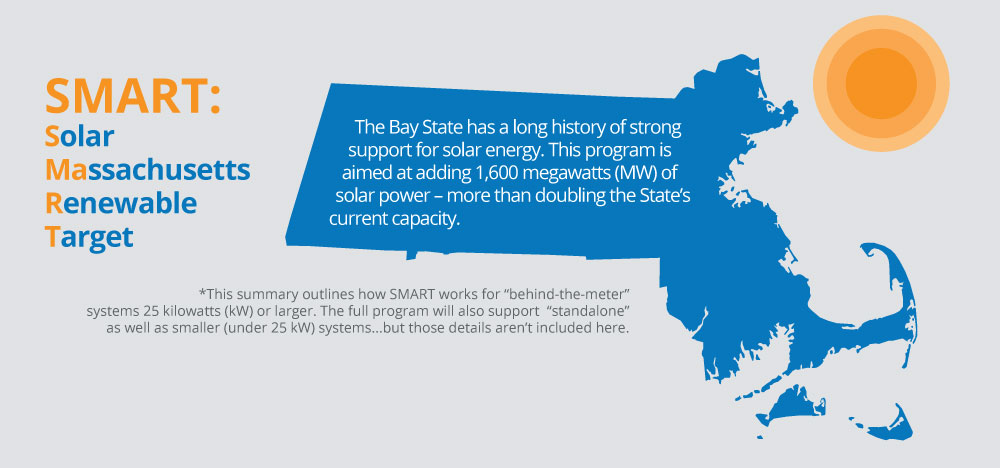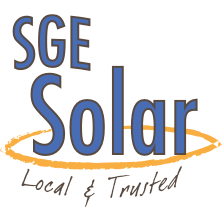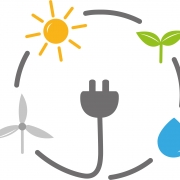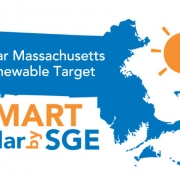Massachusetts’ New Solar Incentive: What You Need to Know for 2025–2026
How the Solar Massachusetts Renewable Target (SMART) Program 3.0 can empower homeowners — and how you can get started today with a free quote from SGE Solar.
If you’ve been thinking about going solar in Massachusetts, now is a pivotal moment. The state’s solar incentive program has just been redesigned — which means significant opportunity for homeowners to lock in savings and benefit from cleaner, locally-generated power. Let’s walk through what’s changed, what it means for you, and how SGE Solar can help you get set up.
The Massachusetts Massachusetts Department of Energy Resources (DOER) recently finalized the updated version of the SMART program — dubbed “SMART 3.0”. Massachusetts Official Website+3Massachusetts Official Website+3pv magazine USA+3
Here are some of the key shifts:
-
The regulations for SMART 3.0 (under 225 CMR 28.00) became effective September 12, 2025. Massachusetts Official Website+2pv magazine USA+2
-
For Program Year (PY) 2025 — which begins October 15, 2025 and runs through December 31, 2025 — there is 900 MW AC of capacity available for systems subject to the cap. Massachusetts Official Website+1
-
Applications for PY 2026 are anticipated to open January 1 (or start of year) through December 31, 2026; DOER published a draft PY 2026 annual report in October 2025 for comment. Massachusetts Official Website+2Massachusetts Official Website+2
-
The foundational model of incentives has shifted: Instead of block-by-block declining rates only, SMART 3.0 will feature annual adjustments of compensation rates and capacity based on market conditions. pv magazine USA+1
What does this mean for homeowners?
-
Better clarity & stability: Under SMART 3.0, once you partner with a qualified installer and your system qualifies, you lock in a per-kWh compensation rate. The annual assessment mechanism means the DOER can adjust future years, but your contract is fixed. pv magazine USA+1
-
Capacity is limited: For PY 2025 there is an explicit “block” of 900 MW AC. If that capacity fills up, you’ll risk missing out or facing lower rates. Massachusetts Official Website+1
-
Must act in time: With both state incentives (SMART) and federal incentives (like the Investment Tax Credit (ITC)) in play, moving quickly helps you maximize savings. globalrenewablenews.com
-
Increased incentives for equity & special projects: SMART 3.0 introduces stronger incentives / adders for low-income households, brownfield or landfill sites, canopy solar, etc. Massachusetts Official Website
-
Behind-the-meter & smaller systems remain viable: Even smaller rooftop systems have pathways to participate under SMART 3.0. EnergyBot
Why choose SGE Solar now?
If you live in Massachusetts (our office is in Milford, Massachusetts which we serve all over MA), working with a local solar installer like SGE Solar brings you several advantages:
-
Free assessment and quote: SGE Solar can evaluate your roof, your usage, your electric bill, and walk you through how the SMART 3.0 incentive will apply to your specific case.
-
Navigational expertise: The new rules do bring changes — proper sizing, interconnection, timing and application matters. A trusted installer will know the process and help you avoid delays or pitfalls.
-
Lock in early: Because capacity and incentives may shift, putting a system into motion now means you’re ahead of the crowd — and can secure your contract under current favorable conditions.
-
Increase your savings: Between the state incentive, the federal tax credit, and potential energy bill savings, you could significantly reduce your electricity costs for years to come. SGE Solar can provide a model for what your return on investment might look like.
Sample homeowner journey
Here’s how a typical homeowner might proceed with SGE Solar under SMART 3.0:
-
Contact SGE Solar for your free quote: get your roof assessed, review your historical electricity usage, see system sizing options.
-
Review the SMART 3.0 details together: SGE Solar will explain how the per-kWh compensation will work, what adders you may qualify for (if any), and how your bill credits or payments may be structured.
-
Apply: SGE Solar handles much of the paperwork — system design, submitting required forms to your utility and to DOER/SMART as needed.
-
Install & interconnect: Your system gets built, inspections happen, and once your system is live you begin benefiting from clean energy + incentives.
-
Monitor & enjoy savings: Over the lifetime of your system, you’ll see your savings accumulate — both from producing your own power and from the SMART incentive plus any applicable federal credit.
Important things to watch
-
Application timing matters: Because the capacity is capped and the incentives are tied to when you apply and qualify, delays can reduce or eliminate your benefits.
-
System size & eligibility: Make sure your system size, location, and roof / property status qualify under SMART 3.0. Some adders or special categories may require additional documentation. (For example, low-income housing, landfills, brownfield, canopy installations).
-
Future years may see lower incentives: Since SMART 3.0 incorporates annual assessment, each subsequent year (2026 and beyond) could have different compensation rates depending on market conditions. Acting during PY 2025 may give you a stronger position.
-
Federal tax credit phase-out: The federal ITC is subject to change and may reduce over time. Capturing both state and federal incentives gives you the strongest savings. globalrenewablenews.com+1
-
Work with a qualified installer: Because new rules are in place, the installer you choose should be familiar with MA’s SMART program, the interconnection process, and all the filing requirements.
If you live in Massachusetts and are considering solar, don’t wait. The window to act under the new SMART 3.0 regime is open now — and the sooner you apply, the better position you’ll be in to capture strong incentives and bill savings.

Contact SGE Solar today for your free solar quote. We’ll walk you through:
-
Your roof and site’s suitability
-
A tailored system size and layout
-
The projected savings under SMART 3.0 + federal incentives
-
An expected timeline and cost overview
-
How quickly you can start saving on your electricity bill
Let’s make 2025 – 2026 the year you switch to clean, efficient solar power — backed by Massachusetts’ strong incentive program.





